- April can be a cold month with low night time temperatures.
- Beware late frosts and keep vulnerable plants and new shoots protected at night if frost is forecast. Don’t be tempted to put out tender bedding until much later on in the month and even then, be prepared to cover it if necessary.
Jobs for April
- By the time we get to the middle of the month, Forsythia will be almost finished flowering, now is the time it should be pruned. Cut out the stems that have just flowered but keep all young stems as it is. These are the ones that will bear the best flowers next year.
- Remove any frost damaged shoots from evergreens damaged by earlier cold weather. Remove any reverted green shoots on hardy variegated evergreens, to prevent reversion taking over.
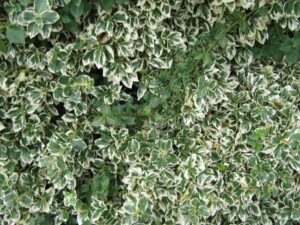
- Now is a good time not only to plant new evergreens and conifers, but also to move to a different location if needed. The secret to success is to dig up the plant with a good, big ball of roots. On most soil types the root ball is wider than it is deep.
- Lightly cut back lavenders and winter flowering heather to dead head and prevent them getting too leggy and woody. The lavender will not grow new shoots if you cut back into the old brown woody stems.
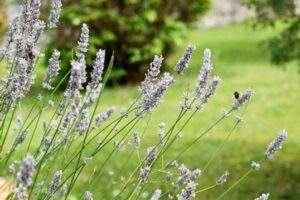
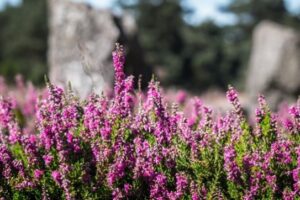
- As the daffodils and early spring flowering bulbs come to an end and begin to look untidy, only remove the old flower heads to prevent seed formation and top dress with bonemeal to encourage the bulbs to swell and grow larger under the soil for next year. Leave foliage intact for 6 weeks. Keep deadheading spring bedding to keep it looking neat and encourage new flowers.
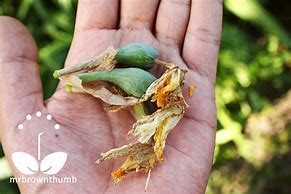
Fruit Garden
- It is now a good time of year to plant a new strawberry bed, Remove any dead or damaged leaves and old runners from the plants. If the plants are getting older, thin out the smaller crowns leaving 3 to 4 crowns per plant. Remember, plants start to reduce their yield over 4 years old.
- Stone fruit trees, such as cherries, plums and nectarines are prone to silver leaf disease which will gradually kill the tree and spread to others. Therefore, they should only be pruned in the spring when starting into strong growth.
- Fruit tree blossom will be appearing over the next few weeks, therefore need to be protected from any overnight frost. If you cover with horticultural fleece, remember to remove during the day for the bees and insects to pollinate. (One layer of fleece represents approx. 2 deg.of frost)
Vegetable Garden
- Most garden centres and nurseries will now have plantlets of vegetables, salads and herbs. For those that find growing from seed daunting or do not have the facilities, this can be the ideal solution to create your vegetable garden, raised beds or containers.
- Brussels, Cabbage, Cauliflower, Sprouting Broccoli, Peas and Lettuce Runner Beans. Most of these plants will have been fully hardened off so there should be no need to protect from frost damage. However, Runner Beans being the exception as these are very tender.
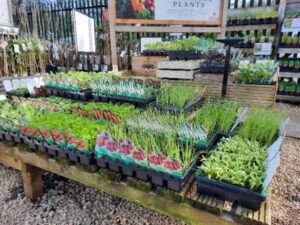
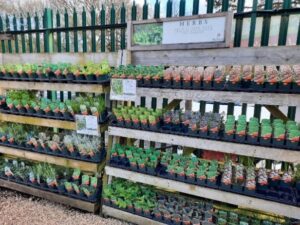
Compost – different types
As most of you will know peat-based compost for the amateur grower is being phased out in 2024, and we are all being encouraged to make that switch. Like all types of compost some brands perform better than others, however, there has been a gradual improvement in peat free compost in recent years. The types listed below generally cover both peat based and peat free.
Multi-purpose – only use for 1 year planting, seed sowing, cuttings, planting, – (better to use special seed compost for fine seeds) – only sufficient feed for 4-6 weeks.
Soil-based compost – shrubs and plants in containers for longer than a year. Retains moisture and nutrients better – John Innes No.3. Can mix 50/50 with multi-purpose to go further except for larger shrubs or trees.
Ericaceous – this is for lime hating plants, such as rhododendrons, camellias, azaleas and pieris. Available in both peat, peat free and soil-based versions.
Grow Bags – these generally have a coarser grade and contain a higher percentage of potassium.
Bulb Fibre – most bulbs do not like waterlogged conditions, open grade of peat with grit added. Can contain charcoal or oyster shell to keep sweet, with little or no fertilizer.
Hanging basket – usually contain water retentive gel. However, this not recommended for winter baskets which need plenty of drainage. (An alternative to using water retention gel is to place a disposable nappy in the bottom of the basket to help retain the moisture in warm weather!!)
